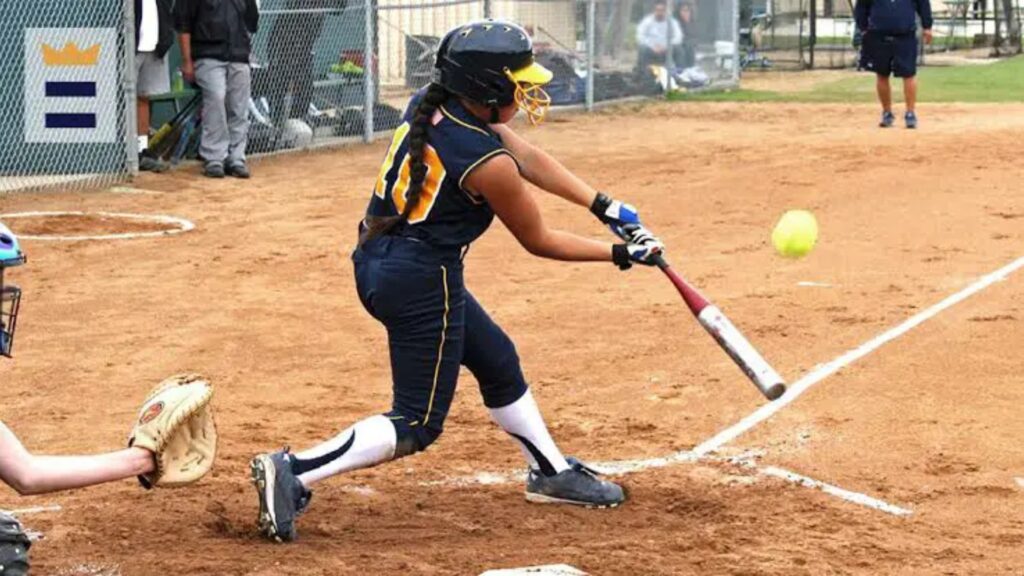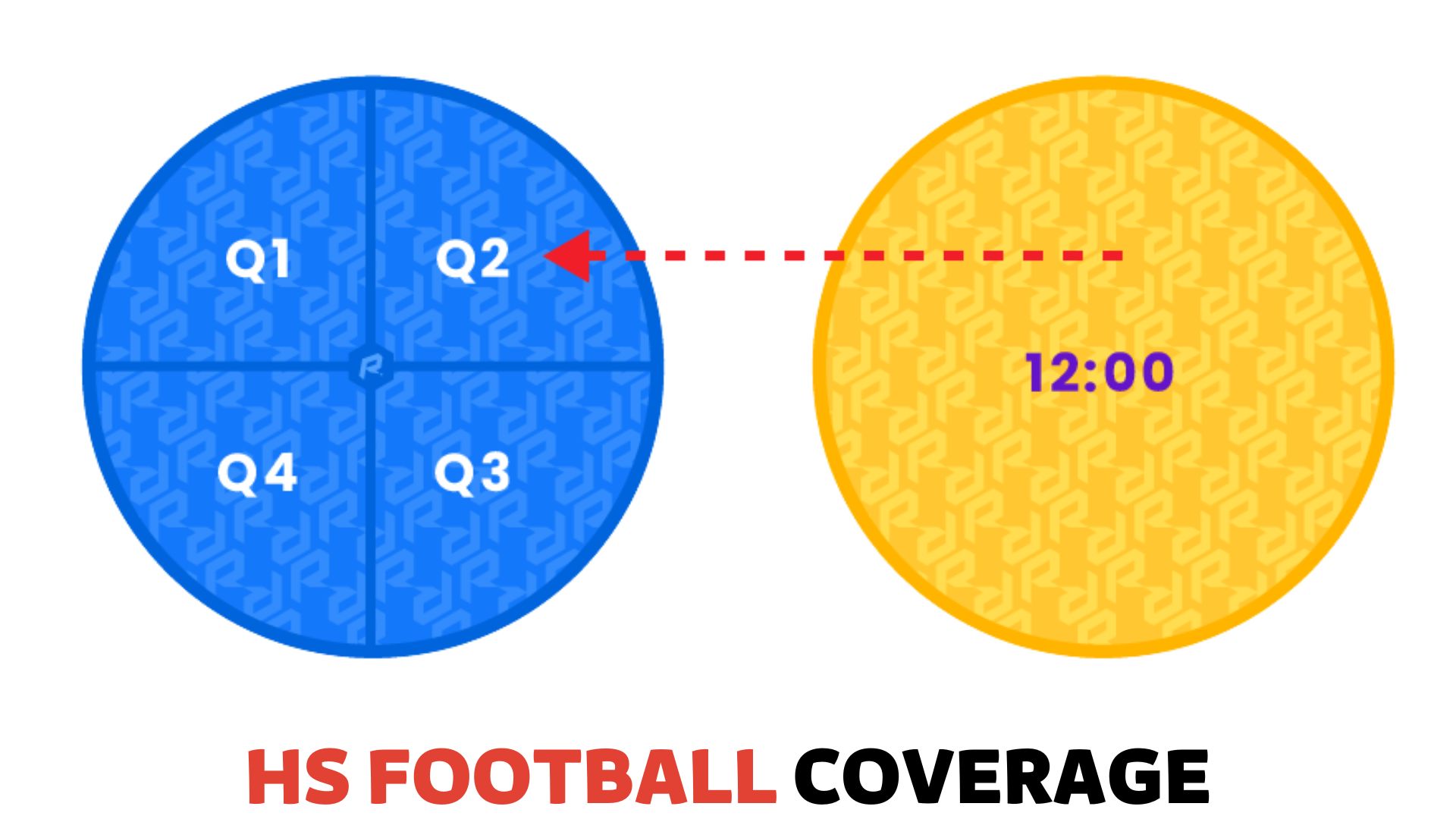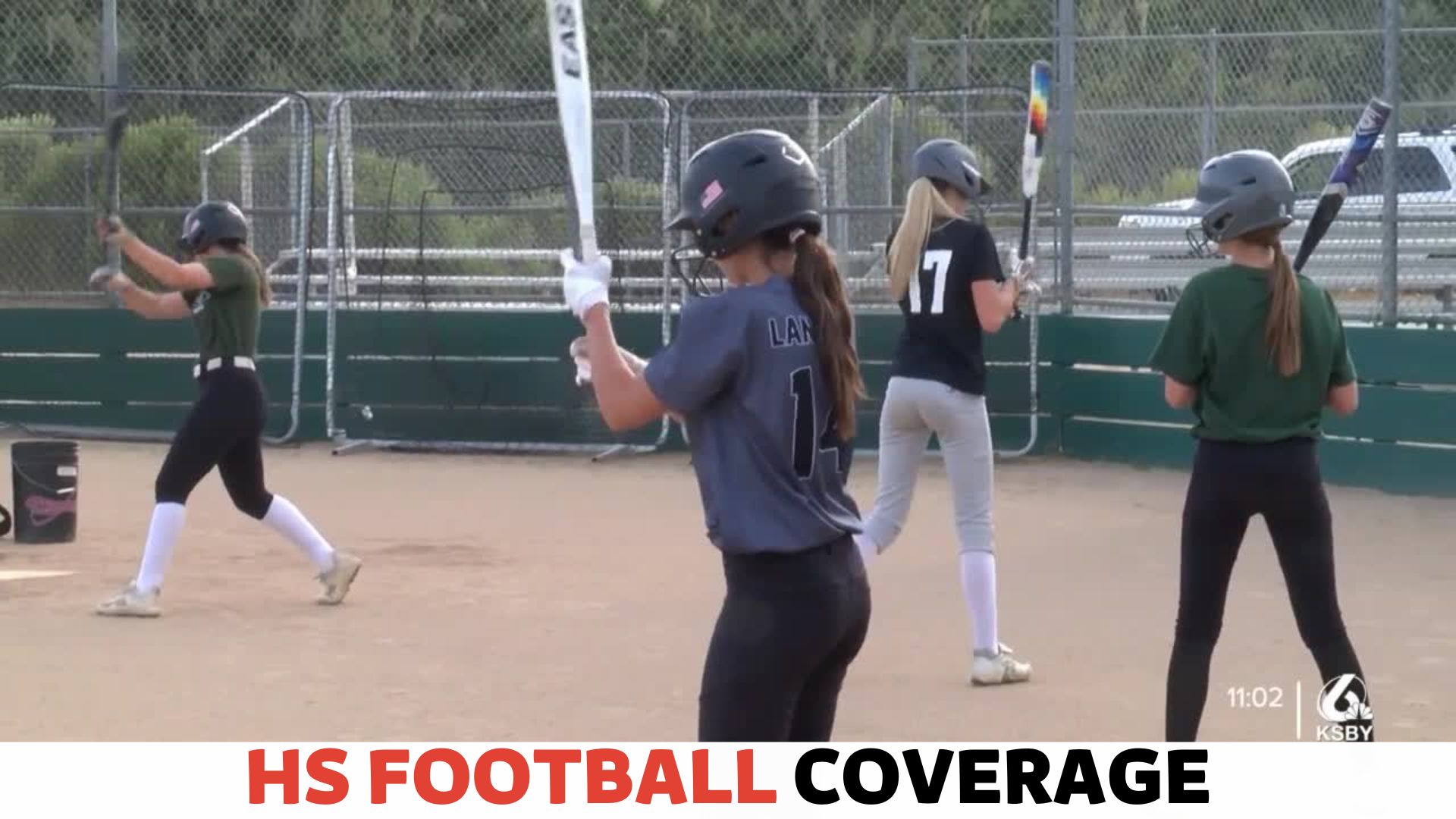
High school softball games last seven innings. In each inning, both teams can bat and play defense.
High school softball games typically last 7 innings. Each inning provides both teams with the chance to bat and play defense. The game progresses through these innings until a winner is determined.
Understanding High School Softball Innings

Understanding the number of innings played in high school softball is crucial for players, coaches, and fans.
Innings determine the game’s duration and provide a structured framework for assessing performance.
In this blog post, we will dive into an overview of high school softball innings duration, explore key factors that influence the number of innings played, and shed light on how teams navigate these innings.
Overview of High School Softball Innings Duration
High school softball games typically consist of seven innings, similar to the professional and college levels.
Each inning is divided into halves, with both teams getting a chance to bat and field. Softball innings are different from baseball innings, which usually have nine innings.
The seven-inning format allows for a faster-paced game that maintains player endurance while providing ample opportunities for strategy and exciting gameplay moments.
Key Factors Influencing the Number of Innings Played
Several factors come into play when determining the number of innings in a high school softball game:
- State and local regulations: The number of innings may vary based on state athletic associations and school district guidelines. It is important to know your area’s specific rules or regulations.
- Weather conditions: Inclement weather, such as rain or lightning, can necessitate the shortening or postponement of games. In such cases, the number of innings played may be adjusted accordingly.
- Game schedule: Some tournaments or doubleheaders may have truncated innings to accommodate multiple games within the same day. Teams may also opt for fewer innings during preseason games or exhibitions to provide players with more practice opportunities.
- Mercy rule: In high school softball, the mercy rule may be implemented when one team leads significantly. This rule allows the game to be concluded before reaching the full seven innings, mainly to prevent undue disparity or prolonged play.
Teams in high school softball strategize around these factors, understanding that many variables can influence the game’s duration.
Adjusting game plans, managing player rotations, and making tactical decisions are essential in navigating through the innings to secure a victory.
Understanding high school softball innings provides a foundational framework for players and coaches.
The number of innings played and their influencing factors help shape game strategies and player performance evaluations.
Teams must adapt to these innings with agility and versatility as the game unfolds, aiming for victory within the designated time frame.
Official Regulations on Innings in High School Softball
Understanding the regulations and guidelines for innings is crucial in high school softball. This section will examine the official rules and specific guidelines governing bodies establish.
By delving into the details, we can ensure a comprehensive understanding of the innings structure in high school softball.
Examining the Rules for Innings in High School Softball
High school softball games are typically played with either 7 innings or as per the regulation set by the governing bodies.
Each inning consists of two half-innings, with both teams getting a chance to bat and play defense.
The goal for each team is to score runs during their offensive half and minimize the opponents’ runs during defensive play.
Discussing the Specific Guidelines Established By Governing Bodies
Various governing bodies, such as the National Federation of State High School Associations (NFHS), have guidelines to ensure fair and consistent gameplay.
These guidelines determine the number of innings and address potential scenarios that may arise during a game.
Let’s take a closer look at the specific guidelines established by the governing bodies:
- Inning Duration: In high school softball, each inning lasts a set duration, usually around 20 minutes. However, if a team scores a run or records an out before the time limit, the inning extends until the defensive team achieves three outs.
- Extra Innings: In case of a tie at the end of the regulation innings, high school softball games may proceed to extra innings. These additional innings allow teams to break the tie and determine a winner. Extra innings can continue until there is a clear winner or a predetermined limit, depending on the governing body’s rules.
- Rule: High school softball may employ a run rule to maintain a fair and balanced game. This rule dictates that the game may be called if a team leads by a certain number of runs after a specified number of innings. The specific run rule varies depending on the governing body and is implemented to prevent excessively lopsided outcomes.
By adhering to these guidelines, high school softball games can ensure fairness, competitiveness, and an enjoyable experience for athletes and spectators alike.
Variables Affecting the Duration of High School Softball Games
High school softball games are a source of excitement and anticipation for players, coaches, and spectators alike.
The duration of these games can vary depending on multiple factors, from weather conditions to gameplay tactics.
In this section, we will explore the variables that can impact the length of a high school softball game.
Exploring Factors That Can Impact the Length of a High School Softball Game
Several factors can influence the duration of a high school softball game. By understanding these variables, players and coaches can adjust their strategies accordingly, ensuring a more efficient and engaging experience for everyone involved.
Weather Conditions and Their Effect on Game Duration
Weather conditions play a crucial role in the duration of a high school softball game. The unpredictability of Mother Nature can either speed up or slow down a match.
Here are a few scenarios that highlight how weather conditions impact the length of the game:
- Rain Delays: When rain starts pouring down during a game, it becomes necessary to pause the match for the safety of the players. These unexpected breaks can significantly extend the duration of a game.
- Extreme Heat: On scorching hot days, players may require more frequent breaks to stay hydrated and avoid heat-related issues. These breaks can increase the overall game duration.
- Strong Wind: A game played in strong wind conditions can affect the ball’s flying trajectories, leading to more defensive plays, longer innings, and a longer game.
- Thunderstorms: Thunderstorms pose a significant threat to players’ safety. When lightning is detected, the game must be halted immediately. Such interruptions can prolong the duration of a high school softball game.
Analyzing Strategies and Gameplay Tactics That Can Extend or Shorten Innings
Gameplay strategies and tactics employed by teams can also impact the length of innings and, consequently, the duration of the overall game. Here are a few factors to consider:
- Pitching Speed: A pitcher who consistently throws high-speed pitches can make it challenging for batters to make solid contact, leading to shorter innings.
- Batting Lineup: A strong batting lineup that consistently gets on base can extend innings by putting pressure on the opposing team’s defense.
- Defensive Skills: Teams with exceptional defensive skills can quickly retire batters, resulting in shorter innings and a quicker game.
- Smart Base Running: Effective base running can create scoring opportunities and prolong innings. Teams that utilize intelligent base running tactics can extend their offensive plays.
- Pitching Changes: Coaches often make strategic pitching changes to keep hitters off-balance. These pitching changes can lead to longer innings as batters adjust to new pitchers.
By considering these factors – weather conditions and gameplay tactics – teams can better understand the variables that affect the duration of high school softball games.
Such knowledge allows for implementing strategies to optimize the game’s length while maintaining an exciting and competitive atmosphere for everyone involved.
Strategies for Shortening High School Softball Games
Finding ways to shorten the duration of high school softball games is often a top priority. This ensures that players, coaches, and fans can enjoy the game within a reasonable time frame, maximizes playing time, and reduces the risk of player fatigue.
In this blog post, we will explore various techniques and time-saving measures that can be implemented to reduce the duration of high school softball games without compromising the quality of play.
Highlighting Techniques to Reduce Game Duration Without Affecting the Quality of Play
1. Implementing a time limit for innings: One effective strategy is to set a specific time limit for each inning. For instance, you can establish a rule that limits each inning to a predetermined time, such as 15 minutes. This encourages teams to be more efficient in their game strategy and eliminates overly prolonged innings.
2. Encouraging players to limit the time between pitches: Another practical technique emphasizes the importance of minimizing the time between each pitch. Players can maintain momentum and avoid unnecessary delays by keeping the game moving swiftly. Coaches should stress the need for quick decision-making and prompt execution, allowing for a more engaging and fast-paced game.
3. Employing a pitch clock: Like professional baseball, implementing a pitch clock can help expedite the game. This clock sets a maximum time allowance for the pitcher to deliver the next pitch, preventing stalling tactics and encouraging a faster pace of play.
4. Limiting coach-player conferences: While coach-player conferences are essential to strategy and development, they can also contribute to game delays. By limiting the number or duration of coach-player conferences per inning, teams can streamline communication while ensuring the game continues appropriately.
Time-saving Measures for Umpires, Coaches, and Players
1. Standardizing umpire signals: To promote efficient game flow, umpires can use standardized signals universally recognized by players and coaches. Games can progress smoothly by minimizing confusion and the need for clarification, saving valuable time.
2. Implementing a designated warm-up area: Allocating a specific area for warm-ups, both for batters and pitchers, reduces the time needed to prepare between innings. Utilizing this designated space enables players to warm up promptly without encroaching on game time.
3. Using technology for pitching changes: Technology can expedite the process of making pitching changes. Allowing coaches to signal to the umpire when a pitching change occurs electronically eliminates the need for physical communication, reducing downtime and hastening the transition.
4. Encouraging efficient infield and outfield practice routines: Efficient and outfield practice routines can greatly reduce the time needed for warm-ups and pre-game preparations. Coaches should emphasize the importance of streamlined drills that prepare players for the game quickly and effectively, ultimately saving precious minutes.
| Techniques | Advantages |
| Implementing a time limit for innings | – Encourages efficiency- Prevents prolonged innings |
| Encouraging players to limit time between pitches | – Maintains momentum- Reduces delays |
| Employing a pitch clock | – Establishes a faster pace- Discourages stalling tactics |
| Limiting coach-player conferences | – Streamlines communication- Avoids excessive delays |
| Standardizing umpire signals | – Reduces confusion- Promotes efficient game flow |
| Implementing a designated warm-up area | – Speeds up warm-up process- Separates warm-ups from game time |
| Using technology for pitching changes | – Eliminates physical communication- Reduces downtime |
| Encouraging efficient infield and outfield practice routines | – Saves time on warm-ups- Improves pre-game preparations |
Conclusion
By implementing these strategies and time-saving measures, high school softball games can maintain an exciting, competitive nature while reducing their duration.
These improvements benefit the players and enhance the overall game experience for coaches, umpires, and fans alike.
The Future of High School Softball Innings
In high school softball, innings play a crucial role in determining the duration and flow of the game. Traditionally, high school softball games consist of seven innings.
However, in recent years, there have been discussions about potential changes or innovations in game duration.
This article delves into the future of high school softball innings, examining potential modifications to the current structure and exploring suggestions for improving the game experience.
Discussing Potential Changes or Innovations in Game Duration
As softball continues to evolve, increasing focus has been on enhancing the game duration without sacrificing excitement and competition.
Here are a few potential changes or innovations that could shape the future of high school softball:
- Reducing the Number of Innings.
- Implementing a Time Limit.
- Adding a Mercy Rule.
Examining Suggestions for Modifications to the Current Inning Structure.
While the current seven-inning structure is commonly practiced, some softball enthusiasts propose modifications that could offer a fresh approach to the game. Here are a few suggestions:
- Implementing Five or Six Innings: Shortening the number of innings could potentially result in quicker games, making them more accessible and appealing to both players and spectators alike.
- Introducing Fractional Innings: Rather than sticking strictly to whole numbers, fractional innings can add an element of surprise and strategy to the game, allowing coaches to make more strategic decisions regarding pitching changes and player rotations.
- Expanding to Extra Innings: Alternatively, expanding the number of innings could lead to more intense and thrilling matchups, giving teams additional opportunities to stage comebacks or continue building momentum.
The future of high school softball innings is filled with possibilities, whether it be reducing the number of innings, implementing time limits, or introducing modifications to the current inning structure.
The aim is to balance maintaining the integrity of the game and capturing the interest and attention of players and spectators alike.
As softball continues to evolve, it will be exciting to see how these potential changes and innovations reshape the sport for future generations.
Conclusion
In high school softball, the number of innings played depends on various factors, such as the level of competition and the specific rules the school or organization follows. While the standard is usually seven, some games may have fewer or more innings.
Understanding the inning structure is important for players, coaches, and fans alike to enjoy the game and follow the progress. Remember the specific guidelines set by your team or league to stay current with the number of innings in high school softball.















